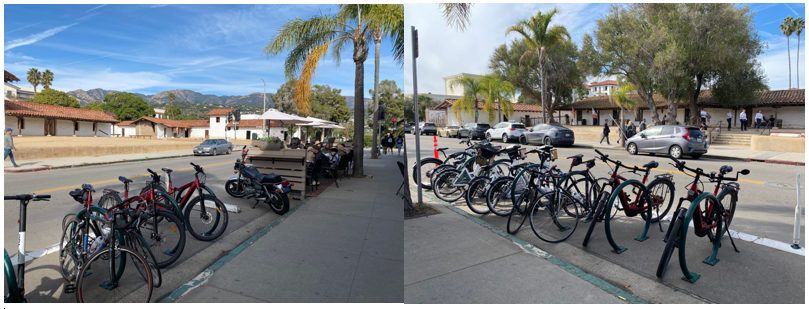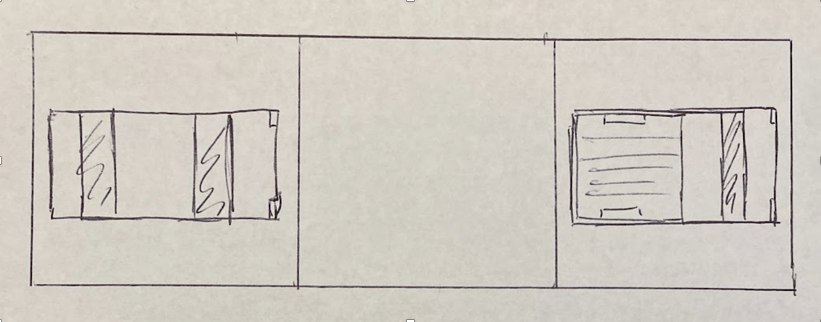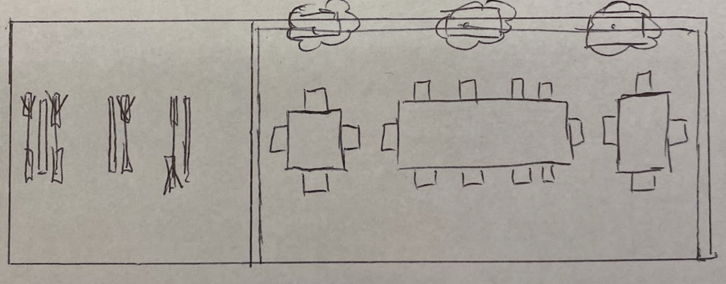The Power of Parklets
How Simple Change Can Give Huge Returns

Parklets have been on my mind recently.
Admittedly, parklets is a rather strange name for the hodge-podge of outdoor dining facilities that have replaced parking spots across the country. Less like small parks and more like mini living rooms set up for al-fresco dining, parklets can range from a few cheap tables and chairs placed on the asphalt to elaborate, shaded structures replete with planters and plastic windows.
If you’ve heard of parklets, it’s probably due to their controversial nature. During pandemic lockdowns, restaurants across the country built parklets in a desperate attempt to keep business flowing without violating social distancing mandates. A few years on, people have realized they like sitting and eating outside, not just for the health benefits but for a variety of reasons: It’s a great opportunity to engage with the city, watch people walk, bike, and drive by; it’s a great way to enjoy the weather; families can be loud outside, etc. Whatever the reasons, many people want parklets to stay.
Here in Santa Barbara, California, parklets have become a flashpoint between self-styled “urbanists,” such as myself, and old-school thinkers who “just want their parking spots back.” Just this week, parklets all over the city are being taken down after a City Council vote banning them from various streets.
Many members of the public, and our Mayor Randy Rowse, claim that parklets have a negative impact on local businesses due to them taking up parking spots. However, this is not the case. Not only have numerous studies shown that restaurant parklets benefit all nearby businesses, a bit of simple math on a real-life local parklet can prove the point.
I thought I’d use this article to do a thought experiment (yes, we’re about to do some math, but don’t turn away! It’s interesting, I promise):
In Santa Barbara, outside Alessia Patisserie on East Canon Perdido Street, there’s a parklet that takes up two parking spots, as well as bike racks that take up another stall. A picture of this parklet is shown below:

Scenario 1: Parking Spots
Let’s imagine that the parklet is removed (we’ll think about bike parking later), bringing back two parking spots. This is what Mayor Rowse would prefer.

To do our calculations, let’s assume a few things:
There are 3 people per vehicle (this is very generous considering the average American car transports 1.2 people on average).
Each vehicle stays parked in a spot for 75 minutes (the limit).
The parking spots are always full.
Each person from each car spends $15 on average (whether at Alessia or another business).
Our experiment runs from 9 a.m. to 6 p.m., or 9 hours, or 7.2 75-minute periods.
Ok, so now let’s do the math to find out how much money the local businesses make:
(3 people)*(2 cars)* (7.2 instances)*($15) = $648
Scenario 2: Parklet and Bike Parking

Let’s imagine the current arrangement stays in place. Again, let’s take a few assumptions:
The parklet, which has seating for 18, averages out to half-full over the 9-hour period.
Each person from each car spends $15 on average.
Each person stays in the parklet for 75 minutes.
Our experiment runs from 9am to 6pm, or 9 hours, or 7.2 75-minute periods.
Okay, now let’s do the math again:
(9 parklet sitters)*(7.2 instances)*($15) = $972
As can be seen, the parklet brings in more money for the business, as well as the city, thanks to sales tax. Assuming sales tax is 8.5 percent, the parking brings in $55.08 for the city, while the parklet brings in $82.62. One also has to remember the parklet tax, which is $3 per square foot per month. The parklet in question is about 250 sq.ft., or about $750 for the city. There’s no question the parklet is better for the restaurant and the city.
Scenario 3: Parklet and Bike Rack
However, some detractors have said that the parklet only benefits one business (even though, again, study after study shows this isn’t true). To address this, let’s bring in the bike parking outside Alessia and do our calculations again:
Now we have Scenario 1 with 3 parking spots and the same assumptions as before:
(3 people)*(3 cars)* (7.2 instances)*($15) = $972
For Scenario 2, we now have a parklet and bike parking. Let’s assume:
The bike parking, which has space for 14 bikes, is also always half full (though when I took the picture it was totally full).
Each bike carries 1 passenger.
Now the calculation looks like this:
(9 parklet sitters + 7 bike people)*(7.2 instances)*($15) = $1,728
Wow, the bike parking makes this space seriously more profitable for all involved!
Obviously, this thought experiment isn’t perfect; the assumptions are based in reality, but probably not real. However, it’s very difficult to change the numbers in a way that makes the parking spots more profitable than the parklet or parklet/bike parking combination. In other words, you’d have to assume that the parklet is almost always empty and the parking is always full for the numbers to reach equilibrium.
On December 5, Santa Barbara City Council re-hashed the parklet debate — for the sixth time. Sadly, this resulted in a vote that mandated the removal of parking on numerous streets. The mayor and one of his councilmember allies, Eric Friedman, repeated the claims that parklets are dangerous and bad for other businesses. These claims are not based in fact. People who make them should just admit they think they have the right to park directly in front of the store they’re going to, no matter the cost.
This article was adapted from a public comment letter sent in by Strong Towns Santa Barbara.

You must be logged in to post a comment.